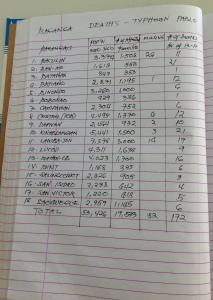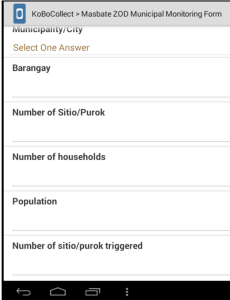The 4 new essential data management tools for humanitarian work
I started working on first response to national disasters in 2009, when the Typhoon Ondoy struck the Philippines. Then, organizations and government officials had to collect data by making phone calls. I remember calling and sending SMS messages to different actors to get new data, and consolidating it using Microsoft Excel. Six years onward, data management during emergencies has improved dramatically. Thanks to new tools that have become mature in the past two years, data management during emergencies has greatly evolved, for the better.
The following tools have quickly found their place in the toolset of humanitarians actors across the world, among the widely used combo of excel sheets and push-pins on a print-out map. And, as my experience shows, they have massively contributed to faster data analysis and decision-making during emergencies:
What is it: ActivityInfo is an online humanitarian project monitoring tool, which helps humanitarian organizations to collect, manage, map and analyze indicators. ActivityInfo has been developed to simplify reporting and allow for real-time monitoring.
Why it’s great: During the Bohol Earthquake response in 2013, I had to create maps and dashboards for updates using Powerpoint after consolidating 14 Excel sheets every week. When Typhoon Haiyan happened, ActivityInfo was introduced to us and was used to collect which partners are doing what and where. Users can create individual accounts and contribute to a main activity sheet for activity monitoring, so you don’t have to call each partner for updates as you will see their inputs right away.
2. Open Data Kit
What is it: Across the world, Open Data Kit (ODK) is widely used during emergencies to get rapid needs assessments at evacuation camps and displacement sites. A good online and offline tool especially for sites where there is no Internet connection, ODK results can be easily exported to Excel for analysis.
Why it’s great: Remember that time when surveys had to be done using paper and pen?
Want to learn more about ODK? A School of Data module is coming soon!
What is it: A project developed by the Office of Coordination for Humanitarian Affairs (OCHA), Humanitarian Data Exchange (HDX) Beta is more than just a repository of datasets used to support information management in various emergencies. It automatically provides you with quick facts and figures on a specific emergency like the Nepal Earthquake.
Why it’s great: There was a time when datasets had to be stored in flash drives, external drives or sent via email. I remember creating MS Access database, but when it’s time to share it with partners, either they have no Access on their laptops or I would need to upload three other Excel sheets which have relationships in my Access database. With HDX, these ressources are shared and easily accessible.
4. Humanitarian ID
What is it: Humanitarian ID is a single contact management app for everyone working in humanitarian crises and disasters.
Why it’s great: For the past three large-scale emergencies in the Philippines, managing contact lists have been a perennial nightmare for information managers like me. Imagine having to collect contact information from about 200 individuals who are responding to the disaster. Now, thanks to this innovation from OCHA, managing contact lists is just a matter of signing in and out of an emergency. All you have to do is to create an account in Humanitarian ID, download the app on your mobile phone, check in on a specific emergency and voila! Expect to get messages from the clusters and groups which you have signed up for. Done with your mission? Check out from that emergency and you’ll no longer hear from them.
These are just some of the tools that have been used by information managers and data analysts from across the world who are involved in disaster response. In the coming years, I am sure that more innovation will come. What is more important is that these data tools will be used to support faster and more efficient emergency response.



